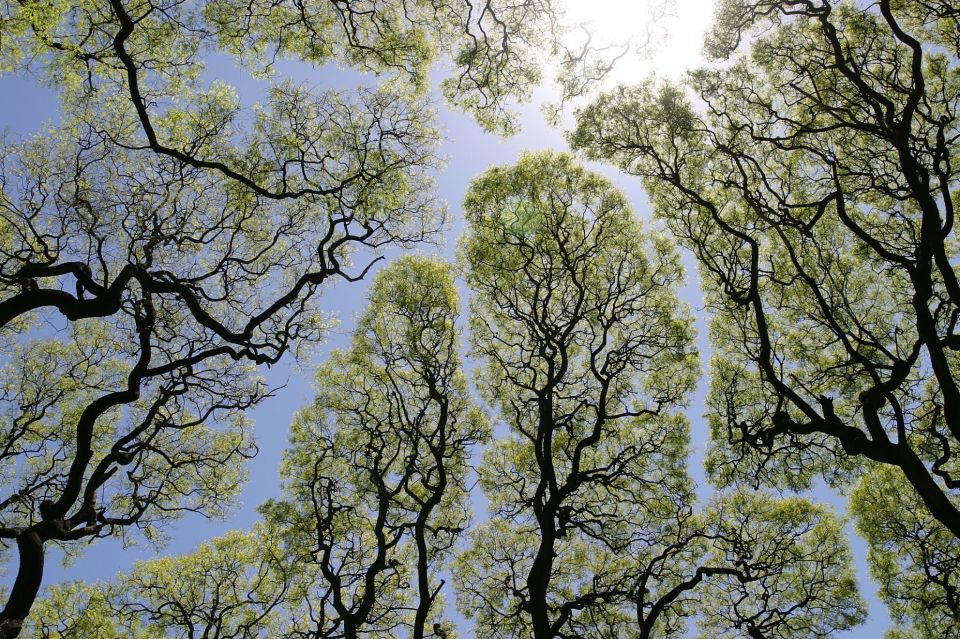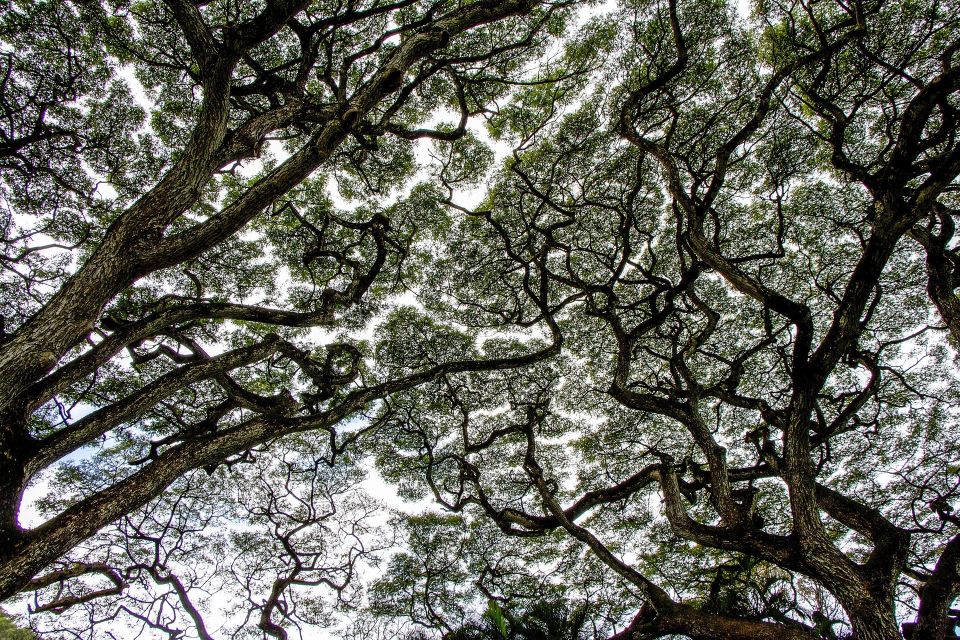Crown shyness

Respect my personal space! Crown shyness is a naturally occurring phenomenon where some trees would strongly prefer to not touch one another, thank you very much.
Who can relate? On a sweaty morning commute on the tube, one of the worst things that could possibly happen is someone accidentally touching your hand as you hold on for dear life. Keep your fingers to yourself, Debra! Some trees have similar feelings. Look up, and you can sometimes see the crown shyness phenomenon, which creates beautiful cracks in the tree canopy.
The visual effect is striking as it forms clearly defined borders, which can look a bit like rivers in the sky. Although crown shyness was first observed in the 1920s, scientists still can’t determine exactly why it happens. Maybe the trees just don't like each other, or perhaps, like the name suggests, they’re shy of one another? We don’t blame them, we couldn’t cope without a bit of personal space too.

What makes crown shyness even more intriguing is that it doesn’t happen all the time. There is some evidence that it most commonly occurs with similarly-aged trees, especially stands of the same species, such as eucalyptus, Sitka spruce, and Japanese larch. So what could the reason behind it be? Some believe crown shyness occurs to reduce the spread of harmful insects. Others believe that trees are attempting to protect one another's branches from getting cracked and broken in the wind. It's also been suggested that it happens so that trees can optimise light exposure in order to maximise the process of photosynthesis.
For a long time, the most noted explanation was that it’s simply caused by trees rubbing against one another. However, if the gaps are caused by abrasion, then it follows that trees in windy areas should exhibit more crown shyness than trees in areas that are less likely to rub together. But biologist Alan Rebertus, writing in Biotropica, found virtually no difference between windy and sheltered stands of trees in a cloud forest. If abrasion is a cause of shyness, it is not the only one.

Rebertus notes another alternate hypothesis which holds that the growing tips of trees use light levels to detect when another branch is near and simply stop growing when they’re too close. It’s a bit like a pact where all the trees have agreed upon the patterns in which to grow in order to maximise resource collection and minimises harmful competition.
Why do you think crown shyness happens - and how? Let us know on Twitter @treesforcities
Though there might not be an easy explanation as to why the treetops stay out of each other's way, we’re still incredibly fascinated by this phenomenon. It’s certainly a nice thought that trees share very inhabit the human qualities of shyness and wanting to have a comfort zone. However, there might be a much more amicable explanation: they care about their neighbours and work together for a common cause. We could certainly learn a thing or two from that.
Donate to Trees for Cities and together we can help cities grow into greener, cleaner and healthier places for people to live and work worldwide.
Donate